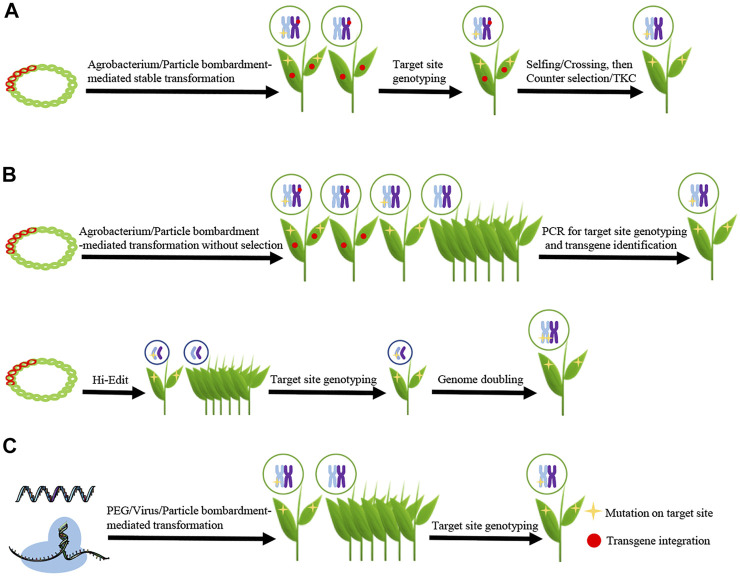FIGURE 1.
Schematics showing the main strategies for isolating transgene-free and genome-edited plants (A) Eliminating transgenic sequence through genetic segregation. CRISPR/Cas DNA (represented by red double helix) is delivered into plant cells using Agrobacterium tumefaciens or particle bombardment. The transgenic plants are isolated, and then genome edited plants are selected through target site genotyping. The transgene-free and genome edited plants are isolated from progenies of transgenic genome edited plants which is facilitated by counter-selection or transgene killer CRISPR (TKC) (B) Transiently expressing the editor from DNA vectors. CRISPR/Cas DNA could be delivered into plant cells using Agrobacterium tumefaciens/particle bombardment (upper schematic) or Hi-Edit (lower schematic). For the strategy using agrobacterium/particle bombardment-mediated transformation, transgene-free and genome edited plants are isolated from all the regenerated seedlings by PCR for target site genotyping and transgene identification. For the strategy using HI-Edit, the haploid progenies are selected and genotyped. The genome edited haploid plants are genome doubled to produce the transgene-free and genome edited doubled haploid line (C) Delivering editors in a DNA-independent manner. CRISPR/Cas9 RNA or Ribonucleoproteins (RNPs) are delivered into plant cells by polyethylene glycol (PEG)-, virus- or particle bombardment-mediated transformation, and then transgene-free and genome edited plants are isolated from all the regenerated seedlings by target site genotyping. Mutation on target site is represented by yellow star and transgene integration by red dot.

